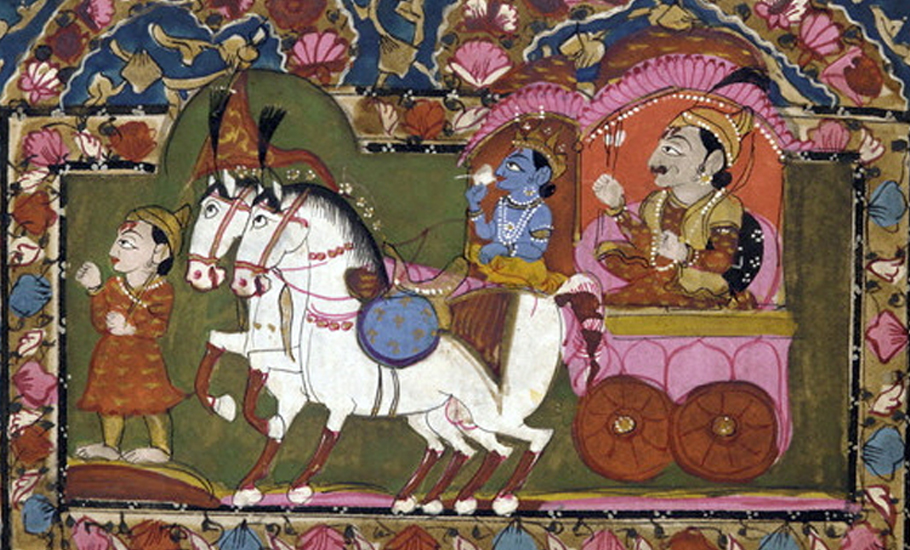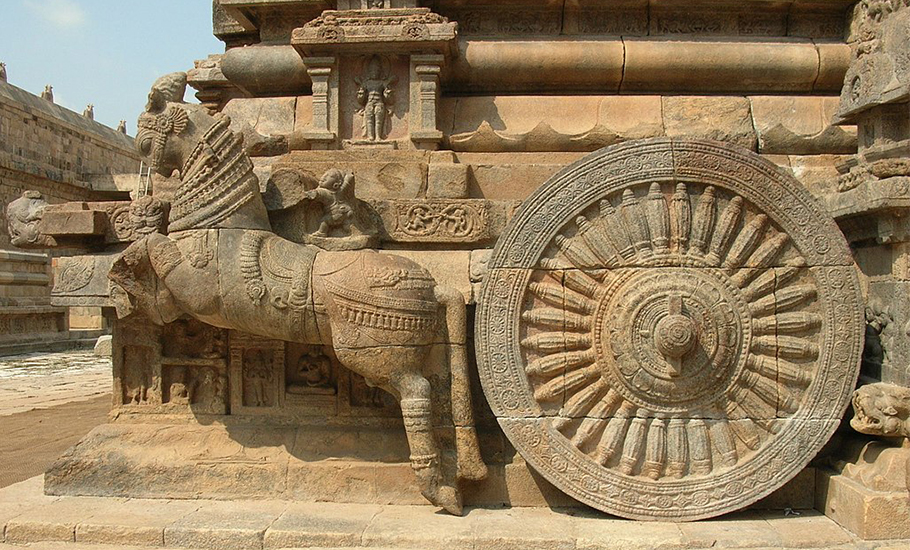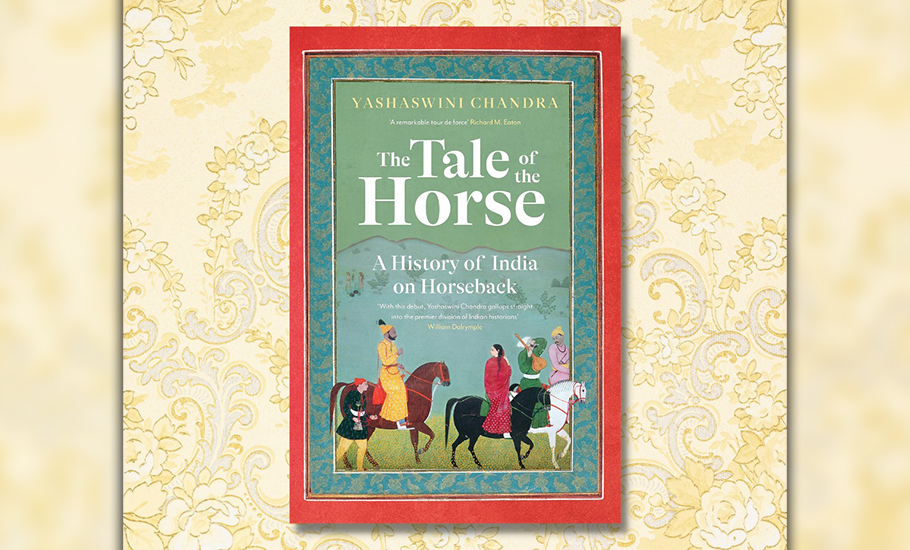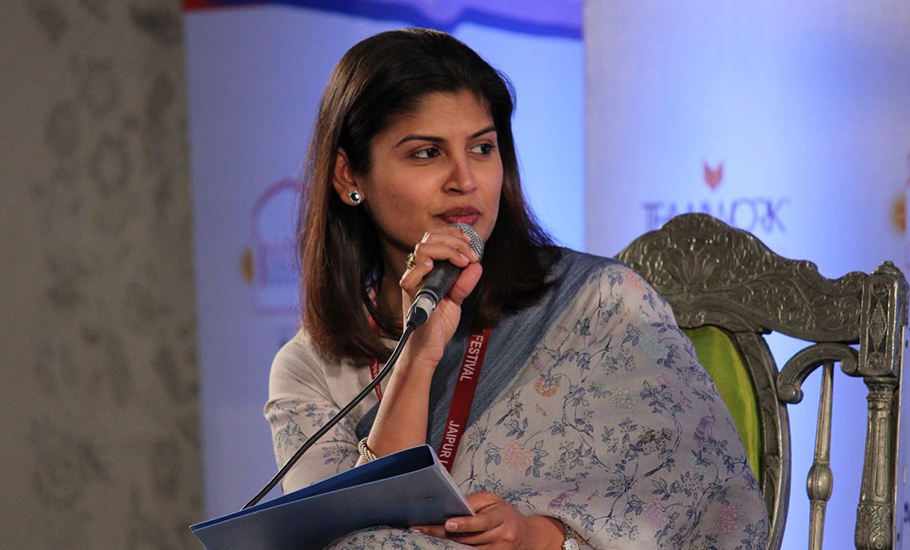
- Home
- News
- Analysis
- States
- Perspective
- Videos
- Education
- Entertainment
- Elections
- World Cup 2023
- Features
- Health
- Business
- Series
- Economy Series
- Earth Day
- Kashmir’s Frozen Turbulence
- India@75
- The legend of Ramjanmabhoomi
- Liberalisation@30
- How to tame a dragon
- Celebrating biodiversity
- Farm Matters
- 50 days of solitude
- Bringing Migrants Home
- Budget 2020
- Jharkhand Votes
- The Federal Investigates
- The Federal Impact
- Vanishing Sand
- Gandhi @ 150
- Andhra Today
- Field report
- Operation Gulmarg
- Pandemic @1 Mn in India
- The Federal Year-End
- The Zero Year
- Premium
- Science
- Brand studio
- Home
- NewsNews
- Analysis
- StatesStates
- PerspectivePerspective
- VideosVideos
- Entertainment
- ElectionsElections
- Sports
- Loading...
Sports - Features
- BusinessBusiness
- Premium
- Loading...
Premium

Galloping across India, how horses shaped our history

Sprinting through Indian mythological stories and historical accounts are horses. The oldest Hindu text Rig Veda mentions the animal ‘horse’ 215 times, 39 times more than the cow, which has come to be widely revered in India. However, there is hardly any evidence of the horse in the (Harappan) Indus Valley Civilization. Many of the famous terracotta seals, recovered from the Harappan...
Sprinting through Indian mythological stories and historical accounts are horses. The oldest Hindu text Rig Veda mentions the animal ‘horse’ 215 times, 39 times more than the cow, which has come to be widely revered in India. However, there is hardly any evidence of the horse in the (Harappan) Indus Valley Civilization. Many of the famous terracotta seals, recovered from the Harappan sites, are engraved with various animals, but there is hardly any sign of horses found anywhere. Some historians, however, believe that there was a native population of wild horses that had disappeared by 8000 BCE, and it was only the ancestors of the Indian wild ass that survived. The intrusion of horses, they say, can be ascribed to the Indo-Aryans, who migrated to the subcontinent from the north and the west during 1500 BCE.
The cavalry was a vital arm of the forces of India’s first great empire, ruled by the Mauryan dynasty, which lasted from the early fourth to the late second century BCE, according to Yashaswini Chandra, who has documented the history of horses in India and their role in shaping the history of the country.
“It is from this period that we get an idea of the major centres of horse breeding and the trade in horses from distant lands,” she told The Federal. The best horses by Mauryan reckoning, she said, were procured from parts of what is now Afghanistan, and, by extension, Central Asia, as well as north-western India. Less reputed horses were being bred in Gujarat. In her recently published book, The Tale of the Horse: A History of India on Horseback (published by Picador India), Yashaswini followed the trail of the animal into and within India until the decline of ‘the age of the horse’ with the onset of colonial rule and mechanisation.
There are two myths associated with horses in India. The first is related to the churning of the cosmic ocean by the devas and asuras to recover the elixir. The churning resulted in the appearance of various treasures and Uchchaihshravas (a seven-headed white flying stallion) was one among them. While epics such as Ramayana and Mahabharata claim the emergence of horses from the ocean, some legends point to the descent of them from the heavens.

The legend identifying horses as originally winged celestial creatures, according to Yashaswini, is mainly preserved within the Shalihotra Samhita or Ashvashatra (the discipline of the horse) genre of Indian literature. Shalihotra was an ancient sage and the founder of traditional Indian veterinary medicines. “In most versions of the myth, the celestial progenitors of the horse lost their wings at the hands of Shalihotra,” writes Yashaswini.
“Eager to do Indra a good turn, he clipped their wings so they could pull Indra’s chariot. Another legend says an irritated Indra tore off their wings and banished them forevermore to earth because they were mischievous and wild. Thus the horse appeared from both the ocean and the heavens, and it is as if these two myths allude to two of the main arenas from where horses arrived in India. Through much of the history of the subcontinent, horses sailed across the Arabian Sea from the Middle East while also travelling overland from Central Asia, where the earth is said to meet the sky and soar towards heaven,” she said.
The sea trade of horses which began in the 10th Century AD lasted till the 19th century. The trade was largely directed towards south India. “Horses were imported to south India from Central Asia and the Middle East. The Arab, Irani and Persian horses were considered a prestigious symbol by the kings. It was the growing importance of cavalry warfare which eventually resulted in the increase in the sea trade of horses from foreign countries,” said Yashaswini, while speaking on The Sea Horse: A South Indian History on Horseback in an online talk organised by the Tamil Heritage Trust recently.
Yashaswini said chariots were a fixture on the battlefields of India until the beginning of the Common Era. However, the situation changed by the 7th Century after horses had come to be ridden into war. On the one hand, according to her, by the first few centuries of the Common Era, batches of Central Asian Afghan horses were crossing the north Indian heartland to reach the ports of Bengal, from where they were re-exported to south-east Asia. “On the other hand, horses from Tibet were being imported into Bengal from quite early on. Horses from Arabia were also rated highly by Mauryan standards and were imported through overland routes connected to north-western India, before they began to be shipped to Indian ports from at least the 11th Century,” she said.

The cavalry became paramount only with the dissemination of horseback archery on a large scale and associated battle tactics by Central Asian Turks in the 11th century, said Yashaswini. However, barring a few instances of the prevalence of the mounted form in earlier periods such as the Gupta period (4th to 6th century), the use of archery had been limited. “Raiding and invading north India from bases in Afghanistan, the Turks fielded armies that featured mounted archers and included heavy cavalry. They were able to conquer large swathes of India, leading to the formation of the Delhi Sultanate and other Indo-Islamic states,” she added.
Mounted archery was practised under the Gupta empire, said Yashaswini by producing a terracotta plaque of an archer during that period. “The horse’s equipment includes a bridle and a saddle with a breastplate, but there were no stirrups. The use of stirrups in India became established in the 9th-11th century. Mounted archery was introduced in India on a wide scale by the Central Asian Turks from the 11th century,” she said.
It is estimated that at least 30,000 horses were imported annually in the late 16th century and anywhere between that number to 1,00,000 horses in the 17th century. By the end of the 16th century, at least 21,000 Central Asian horses were being annually imported to Mughal India. Yashaswini said the commerce in horses involving Mughal India, Uzbek Central Asia and Safavid Iran prospered as their Islamic rulers promoted links across this immense Asian region.
“Earlier, the horses and camels had struggled to negotiate the Khyber Pass, the main bridge between India and Central Asia. It was Akbar who made it fit for wheeled vehicles. Akbar and his successors enhanced the network of roads, maintained a series of forts and posted garrisons to secure trade routes. The roads were patrolled by guards. Soon, caravanserais began to appear as landmarks on the high roads of Mughal India,” she said.
However, caravanserais developed their own issues. Most caravanserais were crowded with horses and it was difficult for the merchants to save their horses from looting.
Even though horses were imported to India by land, they were also sailed to the country from the ports of the Persian Gulf and the Red Sea through the Arabian sea. “Called ‘Bahri’ or ‘sea-borne’ horses, they included Arab horses from the Arabian Peninsula as well as Persian and Iraqi ones. The Arab horses were the thoroughbreds of their day, the prized steeds mounted by kings and generals and reserved for elite sports like hunting, racing and polo,” said Yashaswini. However, the (sea) horse, according to her, had a tough time onboard during the voyage.
“They were packed into ships along with huge reserves of feed and drinking water. The voyage would have been a hideous ordeal for the delicate, sensitive horses, who were prone to nerves and colic under the best of circumstances. They were forced to stand throughout, secured with straps,” she said. The casualty rates for these horses were naturally high due to this. To solve this, many rulers introduced special measures to motivate the trade. “The lords of South India, including Deccan, were notoriously desperate for the horses required to mount their cavalry forces. Far removed from the sources of horses in Central Asia as well as north and western India, for them, the sea trade in horses from the Middle East was the lifeline,” she added.
Yashaswini said a Yadava ruler of northeastern Deccan patronised the pirates pervading the waters facing the Konkan coast provided they handed over the horses from their spoils to him. King Sundara of the Pandya kingdom of southeastern India used to pay dealers a fixed price for Persian horses and it did not matter if any died or were injured along the way. “Saluva Narsimha, the powerful Vijayanagara empire, had horses shipped from the island of Hormuz in the Persian Gulf and Aden in Yemen. Like the earlier Pandya king, he was prepared to shell out even for the horses that had perished. In his case, after their tails were displayed as proof,” Yashaswini told The Federal.
Cavalry warfare had been adopted in south India by the 12th century, and by the 13th century, the Indian peninsula was divided between the dynasties such as Kakatiya, Yadava, Pandya, Hoysala and Chola. The Delhi Sultanate remained the dominant source of power in north India. Yashaswini said the 13th century witnessed some significant developments as foreign merchants began to dominate the commerce in horse, so much so that some of them were appointed governors and administrators of coastal areas and ports by different rulers of the south. From the beginning of the 16th century, the Portuguese, who established their Asian maritime empire by attempting to control the Indian Ocean trade, had begun making inroads into the lucrative horse trade of the Indian Peninsula.

Tipu Sultan, according to Yashaswini, had a soft spot for all equine – horses, mules and asses- of Persian origin. “He encouraged Muscat merchants to sell horses in Mysore and buy rice to take back to Oman. Haidar Ali and Tipu had used horses effectively in the first two Anglo-Mysore wars, fought between 1766 and 1784,” she added.
The average lifespan of a horse is 25 to 30 years. The list of seven recognised Indian breeds into the present –the Kathiawari, Kutch-Sindhi, Marwari, Spiti, Zanskari, Bhutia and Manipuri– provides a surprisingly good starting as well as end point. Were Indian breeds inferior to the foreign ones? “I don’t think so. It was the mindset of the kings that worked out in favour of the ‘foreign’ horses,” she said. However, the one region of the subcontinent that became renowned for breeding which is missing from the current Indian register is the Deccan.
“Its horses as a distinct breed or family having been lost in an undistinguished mass of desi horses,” said Yashaswini, who is an avid horsewoman, whose horse is named Sue.

